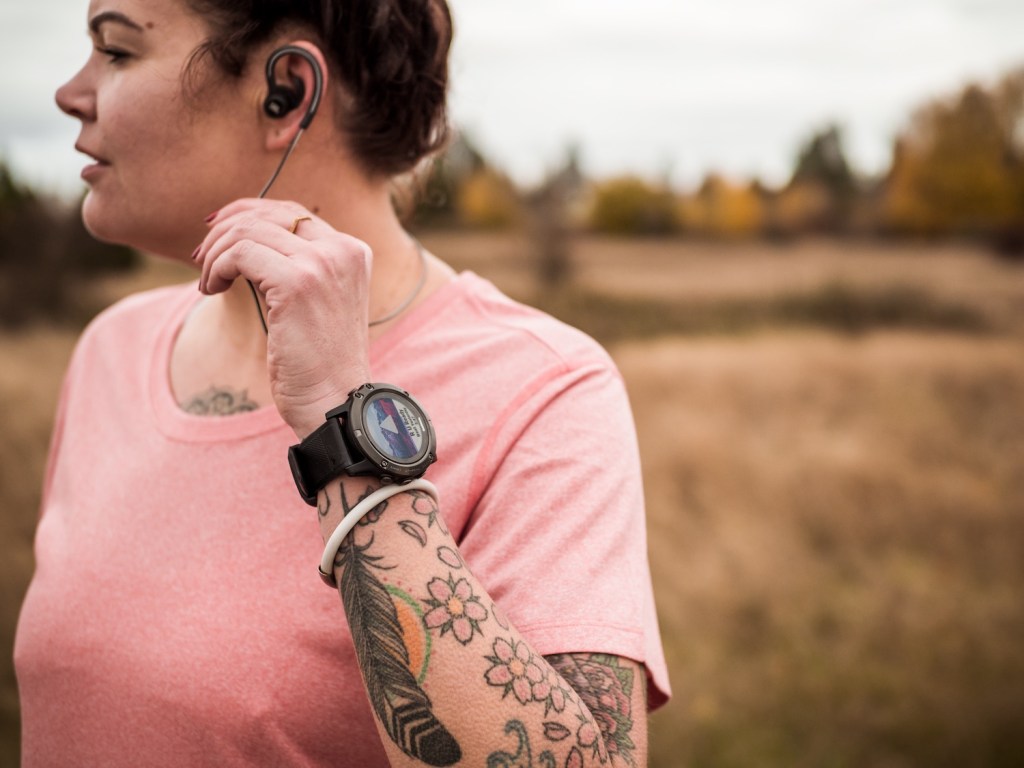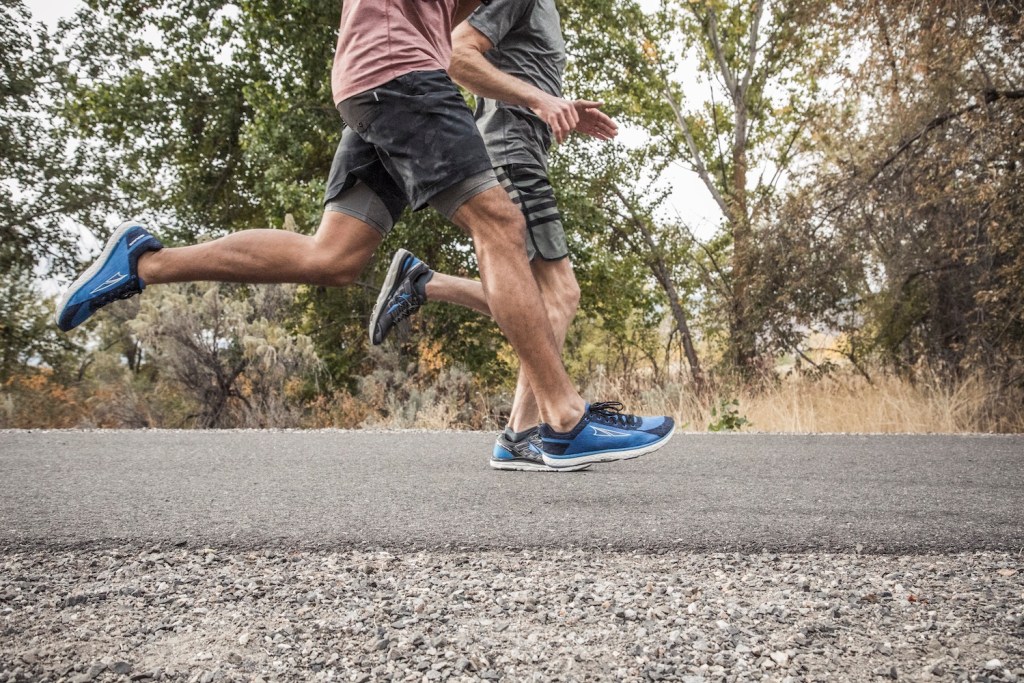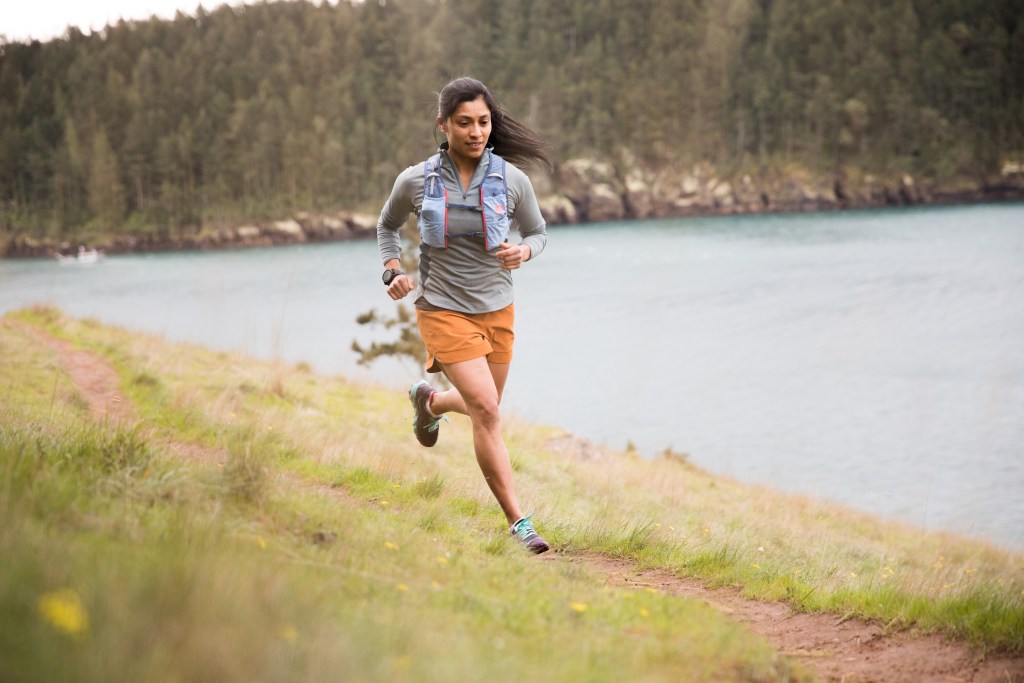Many choose to run for its simplicity—all you need are shoes, shorts and a road or trail. But these days, running has become more complicated, with elaborate recovery routines, smart watches, high-tech earbuds and even performance-tracking sensors built into your shoes.
But how much does all that extra stuff actually improve your running time or aid in recovery? We decided to look into it. So we gathered a colorful cross-section of gear and training techniques—some mainstream, some a bit quirky—and asked an expert runner, Alex Hutchinson, a Toronto-based journalist and runner who wrote the 2018 book, Endure: Mind, Body, and the Curiously Elastic Limits of Human Performance, to weigh in.

Running watches will track your activity, but they won’t necessarily make you a better runner.
GPS Sports Watches
Would you like a time-keeping, mileage-tracking device strapped to your wrist that also syncs to your music library and is able to call, text, offer directions and even buy things while on the go? Welcome to the world of GPS watches. Research has shown that wearing fitness trackers doesn’t necessarily have a long-term impact on one’s health and fitness, but they can be good short-term motivators. On the high end, there’s the Garmin Fenix 5 Plus Sapphire GPS Watch, which offers wizardry like a tool that spits out a route for you in a new place, with prompts on where and when to turn. For a great simplified option, check out Polar M200 GPS Heart Rate Monitor Watch, a running-centric watch with 24/7 activity tracking for variables like sleep, calories and daily steps.
Hutchinson’s Take: “Watches that tell you how fast you’re going and how far you’ve gone are a huge blessing, especially on winding and unmeasured trails. But they can also be a curse, if you end up paying so much attention to what the watch is telling you that you stop listening to what your body is saying. You’ll run better if you learn to feel the difference between fast and too fast. I recommend consulting the watch sparingly while you run, but then checking out the data when you get home to look for patterns or insights to compare to your subjective impression of how the run went.”
Running Barefoot
To preface, we do not mean you should you toss your shoes in the trash and continue your same running routine sans footwear. That’s not a great idea. But as the popular 2011 book Born to Run fueled a spicy debate on the matter, we do wonder if it could be one tool in your bag of training techniques. Or perhaps the solution lies in the in-between land of minimalist shoes, which researchers have found can help strengthen foot muscles and prevent some injuries.
Hutchinson’s Take: “One thing I can say for sure is that simply ditching your shoes won’t magically solve all your running problems. Instead, switching to a more minimalist shoe is a tool that can be used for specific goals—for example, helping to shorten your stride and increase your cadence—and it comes with potential benefits and risks. For trail runners, it may be a tool for increasing foot strength and improving balance and stability, but make sure you ease into it gradually.”

Compression shorts can reduce soreness and fatigue.
Compression Shorts
This most classic piece of a runner’s garb—a pair of shorts—gets an upgrade with new materials, comfortable stretchiness and built-in compression shorts aimed at reducing muscle soreness and fatigue. Check out options like the 2XU Run 2-in-1 Compression Shorts or the Under Armour Launch SW 2-in-1 Long Shorts. For women triathletes, try the TYR Competitor Tri Shorts.
Hutchinson’s Take: “Finding running shorts that you like is trickier than it sounds. Lately, I’ve had several pairs with an inner lining that’s like compression shorts, instead of the usual looser lining. Some people must love them, because they seem to be popular. I won’t burden you with my tales of chafing, but I can’t run in them.”
Smiling On the Go
Hear us out. A 2017 study showed that those who smiled while running saw slightly improved running efficiency compared to those who were instructed to frown. The idea is that facial expressions can impact our level of perceived effort, and thus a smile makes us feel like we aren’t working as hard. If this concept has never crossed your mind, at the very least it’s a free and easy technique to experiment with. Plus, don’t you generally have a better time doing anything while smiling?
Hutchinson’s Take: “Ever since Eliud Kipchoge started grinning during Nike’s Breaking2 marathon a few years ago, runners have been paying more attention to their facial expressions. Personally, I have a hard time grinning when I run, but I’ve definitely become more aware of how often I run with a grimace of agony plastered on my face. Once I’m aware of it, it’s amazing how much better I feel when I just consciously let my face relax. The moral isn’t necessarily that you have to be grinning like a fool out there, but simply be aware that your facial expression can influence how you feel.”

Running with a hydration pack and smiling? She’s got this figured out.
Carrying Water With You
Hydration vests have become an increasingly popular solution to the problem of how to stay hydrated while on a long run. Check out the UltrAspire Momentum for a vest with a lot of carrying capacity or the Salomon Advanced Skin 5 for a simple and functional design that comes with two integrated 500-milliliter soft flasks.
Hutchinson’s Take: “This is one of those gear-design breakthroughs that seems so obvious it’s hard to remember they’re relatively new players on the hydration scene. If you’re running long trails, particularly in remote areas, you need to bring fluid with you. From a physiological perspective, your body doesn’t care whether that fluid comes from a handheld bottle, a backpack-style hydration pack or a bottle belt—all that really matters is comfort and capacity. Ever since my wife got me one of these vests a few years ago, I’ve been a convert.”
Ice Baths
Ice baths can speed up recovery. Or can they do nothing. Or they can make things worse. Recent research suggests that athletes who take ice baths may have less long-term muscle gain than those who do a more active cool down, like walking or stretching. If there’s a recovery technique that can really split a group down the middle, it’s probably the agonizing ritual of bathing in near-frozen water.
Hutchinson’s Take: “Ice baths are so painful—and yet many runners swear they leave you feeling so much better the next day. Despite dozens of studies over the years, the research on ice baths is far shakier than you might think. There’s very little evidence that they magically heal your muscles. But as science journalist Christie Aschwanden recently pointed out in her book on the science of recovery, Good to Go, recovery is also a state of mind. So, if ice baths leave you feeling great, that’s a win.”
